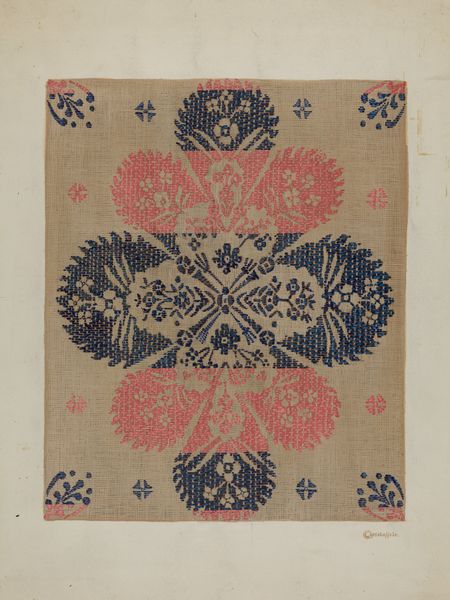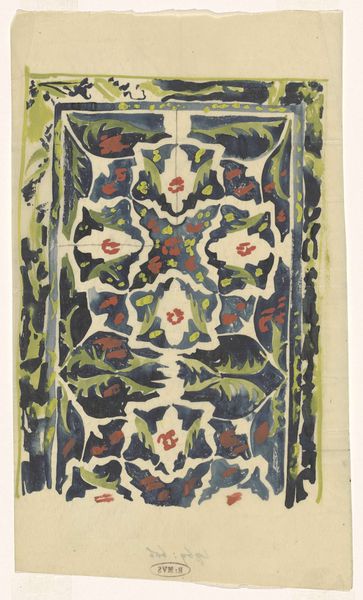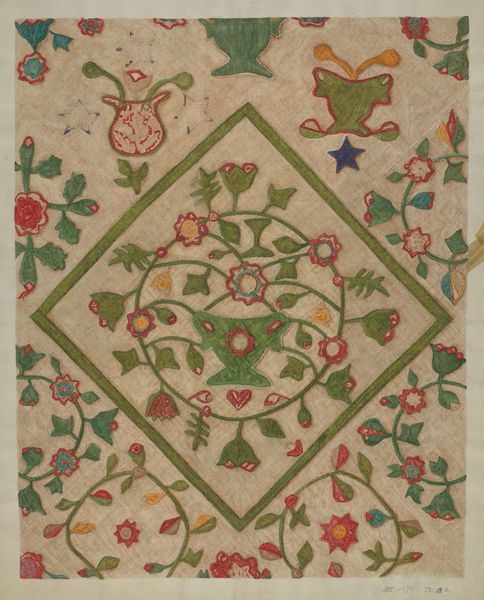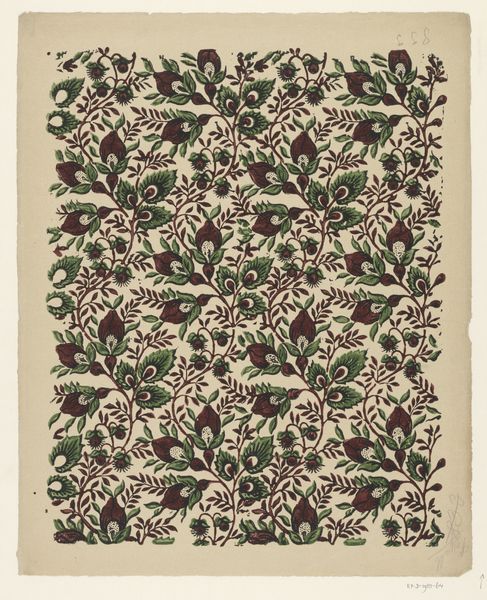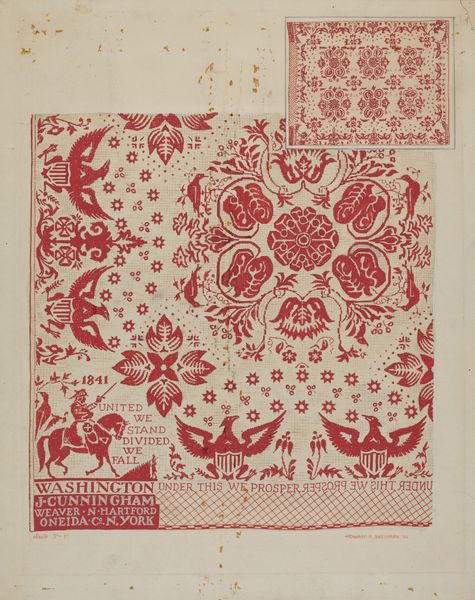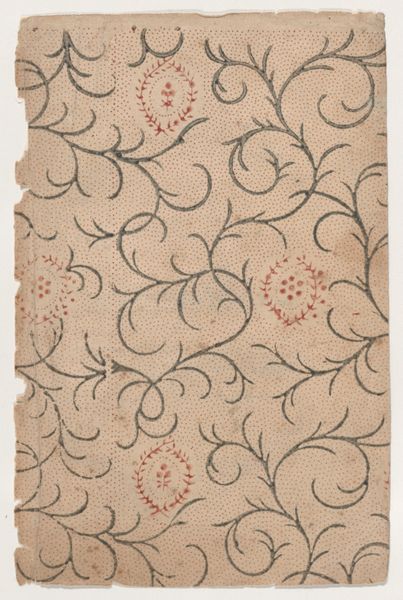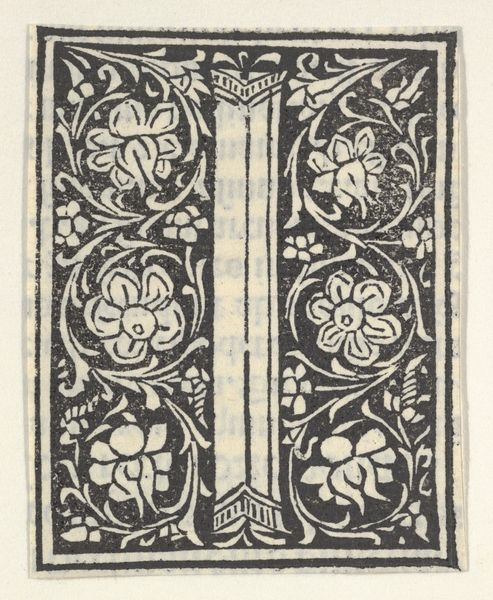
fibre-art, textile
#
fibre-art
#
textile
#
geometric pattern
#
ethnic pattern
#
folk-art
#
geometric
Dimensions: overall: 70 x 53.9 cm (27 9/16 x 21 1/4 in.) Original IAD Object: 51" wide; 74" long
Copyright: National Gallery of Art: CC0 1.0
Curator: Here we have Margery Parish’s “Colcha,” created around 1937. Parish worked primarily with textiles and drawings, often incorporating geometric and folk-art elements. The piece showcases colorful ethnic patterns within a distinct geometric structure. Editor: My first impression? It’s visually very comforting. The symmetries create an engaging textile structure that gives an overall sensation of soothing balance, though the figures and colors, while soft, are vibrant, which could evoke something playful. Curator: Considering Parish’s practice, it's important to look at the materiality. Colchas are a traditional form of embroidery that goes back to colonial New Mexico; it's fascinating to think about Parish consciously engaging in the reproduction and reinterpretation of labor-intensive indigenous crafts within a contemporary setting. Editor: That history definitely resonates, seeing echoes of traditional weaving patterns—especially through the figures framed around the edge, contrasted against a euro-style presentation, framed to be hung on the wall almost like a trophy. One wonders who exactly was this artwork for, and what identity might it have performed in its space of belonging? Curator: Exactly. It’s intriguing to consider the role Parish occupies when making work like this; are they reclaiming indigenous art practice in contrast to a very real historical and material loss; and simultaneously blurring high art with "craft" practices? Was Parish using the colcha as a way to connect to specific local histories and challenge dominant forms of art-making? Editor: That tension between preservation and display feels central. Considering its folk-art aesthetic, the 'Colcha' also brings up timely questions about authenticity, commodification, and appropriation, within folk art and the construction, performance, and documentation of cultural heritage. It seems a powerful vehicle for thinking through identity. Curator: I completely agree. The ‘Colcha’ functions as both textile and document; with folk-art forms having significant visual power to challenge a singular reading of material culture by incorporating tradition and reinterpreting what we assume it should be for the sake of consumption. Editor: It's a complex work that invites conversations about heritage, identity, and the enduring relevance of traditional practices in a modern world. Curator: Absolutely, and when examining the details in Parish's work we get a glimpse into what drives her work: not just the act of crafting, but understanding cultural implications for these materials that engage with our modern cultural memory.
Comments
No comments
Be the first to comment and join the conversation on the ultimate creative platform.
